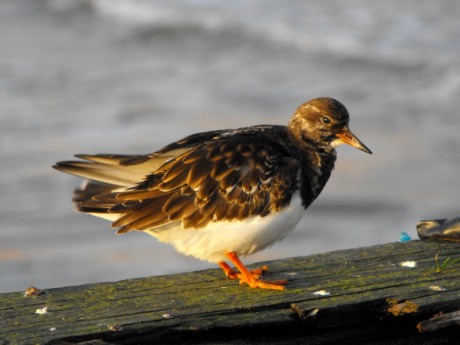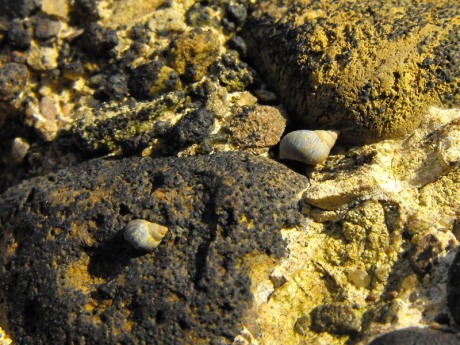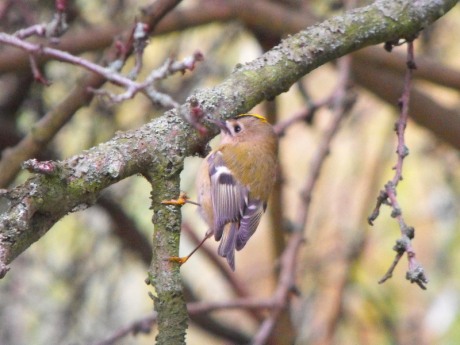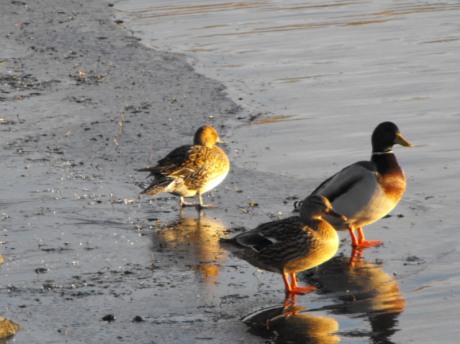At present, I have not been receiving text updates from the Scarborough Bird Alert as I have not paid for the service. This is not because I have been trying to get the service for free, or because I am desperately poor (even though I am). It is purely because I haven’t bumped into anyone to give the money too, having missed the last million Scarborough Birders meetings by; A – being at work; B – falling asleep after work (only once); and C – being in Cumbria.
Anyway, fair’s fair, and I am off the service until I pay someone. This means I have to find my own birds, and also rely on the intermittently updated Scarborough Birders website. (I also have a mole on the inside that sends me choice texts, but shhh!) Anyway, the Scarborough Birders website informed me that up until the 3rd of December, a Red-Breasted Goose had been seen at Harwood Dale lake. I had seen a Red-Breasted Goose earlier in the year at Scaling Dam, and indeed assumed that this was the same bird. However, I decided to go and see it again for one very good reason – it is the most gorgeous goose in the world, even beating out Emperor Goose.
I got to Harwood Dale lake, lovely picturesque setting, and immediately located the Red-Breasted Goose feeding amongst the feral Canada Geese. I obtained the following utterly disappointing shots.

Pretty shabby quality, eh?

Digiscoping was no better. My camera isn't really very good at it.
Goose-wise, there were also six Barnacle Geese, a few Greylags and a single Pink-Footed Goose. On the rest of the lake there were seven Goosanders, two Cormorant, a Grey Heron, and a few Mallards. After watching the goose for the best part of an hour, I decided to move on to see what else I could find. (A decent-quality picture of the goose can be seen on the Scarborough Birders sighting page here)
My next stop was Hackness lake. You can’t actually get down to the lake, so you have to scope it over a fence from the side of the road. This revealed three Mute Swan, another Grey Heron, Mallards, several Teal, and four Mandarins; three drakes, one duck. Unfortunately, they were too distant for photographs. I also heard a Green Woodpecker yaffle, and a Nuthatch calling. I’ve not seen Green Woodpecker round here before, but I’ll remember it as somewhere to check out in future.
My next stop was the Flower of May caravan site. There is a pond right next to the entrance, which often attracts winter geese that are passing through. I had been told that a Taiga Bean Goose had been favouring the pond for a few days, but unfortunately, there was no sign of it today. These geese subspecies seem to have it in for me. Anyway, at the pond I saw a small group of Wigeon, six Redshank, eighteen Golden Plover flying around in the distance, and a few hybrid geese. Two of the hybrids were the common Canada x Greylag Hybrids, but one was a bit different. It looked bigger than the other geese, with a longer neck, with a gradient of colour from the back of the neck to the front, a small white extent of feathering above the bill, and muddy yellow/orange legs. Once again, this was a goose that I had history with. This was Mungo. I first saw Mungo on the 6th of February this year, and thought it a pretty odd looking beastie. Another birdwatcher in the area tentatively suggested Hawaiian as an ID, but when I checked this later it was obvious that this was incorrect. After sheer minutes of searching, I decided that a Swan Goose x Canada Goose Hybrid was the best fit, but I had no way to confirm it. Luckily, after a short period of time, it showed up at Peasholm Park, where Steve obtained this stunning image:

Mungo!
Anyway, other than Mungo, the Swan Goose x Canada Goose Hybrid, there was nothing more of interest here, so I moved on to Scarborough Mere.
I didn’t spend long at Scarborough Mere, if I’m honest. I had things I needed to be doing at home. So why go? Well, I’ll tell you. I have a strange fondness for a group of geese that hang around near the carpark begging for bread. They are a really horrible mixed group of Domestic Greylags, Domestic Swan Geese, various hybrids of the two, and a Greylag Goose, called Cloppy, that has the top of its beak missing. They are like a family to me. After checking they were all okay (I will get some pictures for you another day, you voracious readers you) I had a quick scan around. “Aha! What’s this?” said my brain, as my view alighted on a drake Red-Crested Pochard. “A Red-Crested Pochard” it thought. Unfortunately, despite it being within inches of my camera, the pictures are rubbish:

Need to learn to use my camera really.
I then returned home, and nearly stood on a dead Collared Dove on the path.

Dead dove
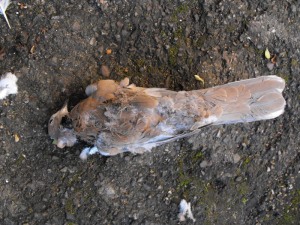
Still dead
If anyone knows what might have killed the poor thing, then answers on a postcard please. My guess is a horrible cat, but if anyone thinks they know better, let me know. (My guess would also be cat. If anything had caught it to eat then they would have started on the chest. The only other possibility is that a bird of prey killed, then was disturbed before it started plucking)
I then spent the afternoon being constructive, washing carpets and wiping things indiscriminately, as people with homes do.
Later on, I managed to convince Rachel that a walk around the harbour would be invigorating and exciting, so we went for a wander. The first birds of interest were the numbers of Turnstone around. Throughout our walk, we must have seen close to forty altogether. Anyway, quite a lot were hanging around near where they clean & sell the fish, watching a lady washing out the shop floor with some interest. The following picture amuses me because they look like they are considering mobbing me, but really, they were after Rachel’s fish sticks.

The Turnstones are massing!
Near the mouth of the harbour I saw a couple of birds swimming and diving in the sea. I called Cormorant, Rachel called Diver. Of course, Rachel was right. Two Red-Throated Divers:

Turning back and facing back into the harbour, a winter-plumage Guillemot could be seen up against the rear of some moored fishing boats. A Shag popped up quite close, the first I have seen in the harbour, allowing me to take this picture:

Rachel then spotted a gull in the water, and asked me what it was. It was clearly a Black-Headed Gull, but I had a look through the binoculars to humour her. Unfortunately, Rachel’s uncanny ability to make me feel like an idiot was working in force, and the gull turned out to be a Kittiwake in winter plumage. A Kittiwake in the harbour in December? Who’d a thunk it?
A Great Crested Grebe was also popping up regularly in the harbour, but too distant for semi-decent photos. A Rock Pipit was also bobbing about, but as the light dimmed getting an unblurred photo was becoming quite difficult. We had a quick look at the Purple Sandpiper roost…
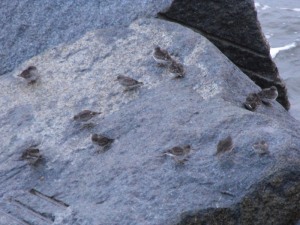
… which held at least 31 birds. Rachel spotted another Guillemot in the sea, and that was pretty much it. Another thin gto mention though was a gull I saw and photographed near the Turnstones. At first I thought it was just a 1st winter Herring Gul, but the pale head and neck seemed unusual. It didn’t seem like a 2nd year or later Herring Gull either, with no sign of any grey feathers coming through on the back. I’ve put a copy of the picture on Birdforum, where I will obviously be proved wrong and it will just be 2nd winter Herring Gull after all, but I will put a copy on here for my dear readers as well, so you can laugh at my ignorance.

Weird...
UPDATE: I have also added pictures to some of my recent pictureless posts. Reread, and enjoy!

